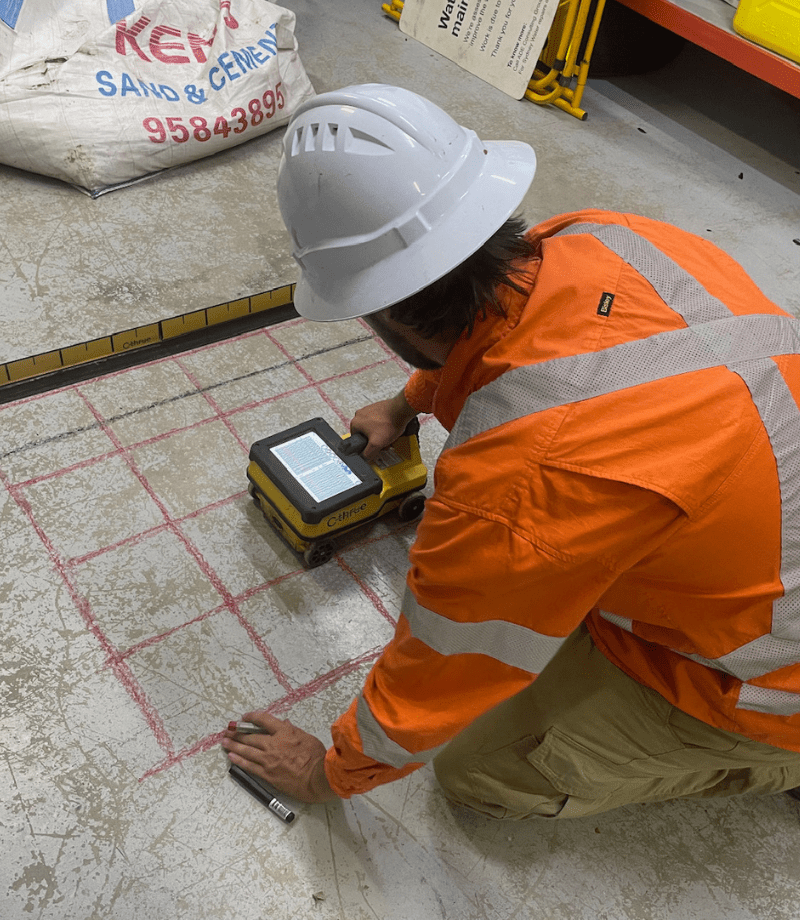RainierGPR Service Areas: Top Concrete Scanning Solutions Across Regions
RainierGPR Service Areas: Top Concrete Scanning Solutions Across Regions
Blog Article
Enhancing Project Preparation and Implementation With Advanced Concrete Scanning Techniques
In the world of task planning and foresight, accuracy and implementation are important components that can make the distinction between success and troubles. Advanced concrete scanning methods have arised as an advanced device readied to raise the standards of task administration within the construction market. By utilizing sophisticated innovation, these techniques use a glimpse right into the structural stability of a building also prior to the very first block is laid. The ramifications of such innovations are profound, promising a paradigm change in how jobs are approached and provided.
Benefits of Advanced Concrete Scanning Techniques

Improved Accuracy in Task Analyses
Enhancing job evaluations through advanced concrete scanning strategies dramatically enhances the precision and reliability of construction analyses. By using advanced scanning technologies such as ground-penetrating radar (GPR) and 3D imaging, task groups can now get in-depth insights right into the problem of concrete structures, recognizing prospective defects or weak points that may not show up to the nude eye. This enhanced degree of accuracy in task evaluations enables building and construction experts to make more educated decisions relating to repair work and upkeep techniques, leading to enhanced total task results.
Moreover, the boosted accuracy in job assessments accomplished via sophisticated concrete scanning strategies assists in decreasing the risk of unpredicted issues throughout the building and construction phase. By proactively identifying covert abnormalities within concrete structures, such as rebar rust or gaps, project groups can resolve these issues beforehand, avoiding expensive hold-ups and rework later in the job lifecycle. Inevitably, the improved accuracy in job analyses facilitated by sophisticated concrete scanning strategies adds to greater effectiveness, cost-effectiveness, and high quality in building and construction projects.
Early Identification of Architectural Obstacles
Very early discovery of structural challenges plays a vital duty in ensuring the integrity and safety of concrete structures throughout the building process. Determining possible concerns at a very early phase enables prompt intervention, protecting against costly rework, routine hold-ups, and safety and security hazards. Advanced concrete scanning strategies, such as ground-penetrating radar (GPR) and 3D imaging, enable task teams to discover hidden defects, spaces, support design inconsistencies, and other anomalies that could compromise the structure's stability.
By carrying out these methods during the planning and execution stages, building and construction specialists can proactively resolve architectural difficulties before they escalate right into significant issues. For example, discovering insufficient concrete cover over reinforcement bars early on can protect against deterioration and structural weakening in the long run - RainierGPR Service Areas. Moreover, recognizing variants in concrete density or density can aid enhance material use and make sure uniform toughness residential or commercial properties throughout the framework
Ultimately, very early recognition of structural obstacles with advanced concrete scanning not just improves the total high quality and sturdiness of the construction yet likewise adds to a much safer built setting for residents and customers.
Improved Precaution in Construction
The execution of robust safety and security protocols is imperative in the building industry to reduce threats and protect the health of stakeholders and workers. Building and construction sites are inherently unsafe environments, with prospective threats ranging from falls and tools malfunctions to structural failings. To boost safety procedures, building read the article and construction companies are progressively taking on technological developments such as wearable gadgets that check workers' important indications and discover possible health and wellness concerns in real-time. Additionally, using drones for website security permits regular security assessments without placing employees in injury's way. Safety training programs have likewise developed to include online truth simulations that supply hands-on experience in managing emergency situation scenarios. Additionally, the integration of expert system in safety management systems enables proactive identification of potential risks, permitting prompt treatments. By focusing on safety and security with the consolidation of sophisticated innovations and extensive training programs, building projects can considerably decrease accidents and develop a safe and secure workplace for all included - RainierGPR Service Areas.
Streamlining Task Administration Processes
To maximize operational performance and guarantee task success in the construction market, a concentrate on improving task management procedures is essential. By executing reliable project administration procedures, construction jobs can decrease delays, decrease prices, and boost overall efficiency. One vital aspect of improving task monitoring is using innovative modern technologies such as Building Details Modeling (BIM) software, which enables real-time partnership, clash discovery, and exact task scheduling. Additionally, the adoption of cloud-based job administration systems enables seamless communication among staff member, immediate accessibility to task information, and the capacity to track progress in real-time.

Final Thought
Finally, the use of sophisticated concrete scanning methods provides various benefits for job preparation and execution. These strategies supply enhanced accuracy in project assessments, like this very early recognition of architectural difficulties, enhanced safety actions in building and construction, and structured project management procedures. Integrating these techniques into task process can ultimately lead to extra effective and effective outcomes in building and construction jobs.
Eventually, the improved precision in project analyses assisted in by advanced concrete scanning strategies contributes to better effectiveness, cost-effectiveness, and quality in building and construction projects. RainierGPR Service Areas.
To maximize operational performance and guarantee project success in the building industry, an emphasis on streamlining job management processes is important. By applying effective task management procedures, construction jobs can anonymous minimize delays, reduce expenses, and boost general productivity. By streamlining job monitoring processes with modern technology integration, clear interaction, and data-driven approaches, building jobs can attain greater effectiveness, cost-effectiveness, and effective outcomes.
These methods supply better accuracy in job evaluations, very early recognition of structural difficulties, improved safety and security measures in building, and streamlined job monitoring procedures.
Report this page